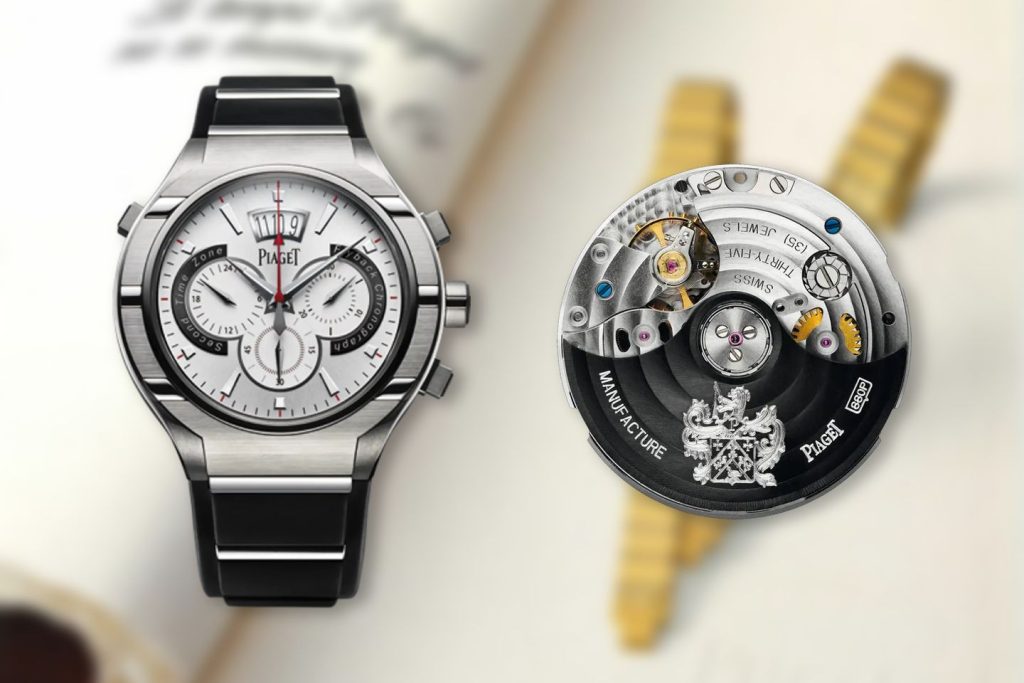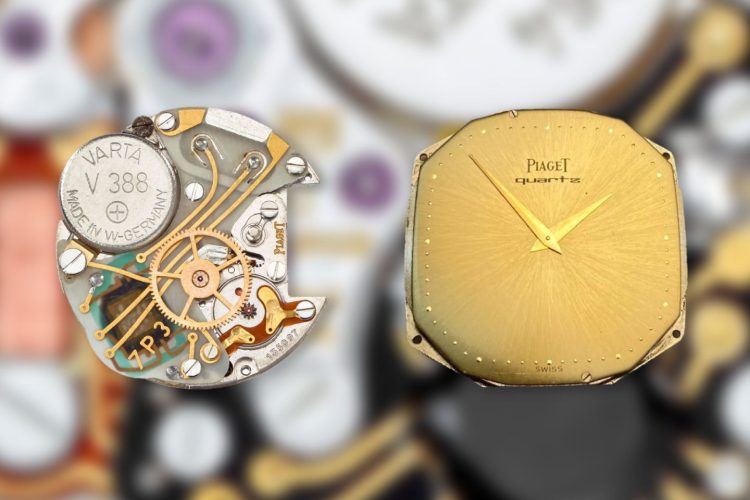Introduction
Piaget, a prestigious Swiss luxury watchmaker, has long been revered for its innovative approach to horology. The brand has continually pushed the boundaries of watchmaking, combining cutting-edge technology with traditional craftsmanship. This article delves into Piaget’s advanced horological technology, its movements, and the unique processes that set it apart in the world of luxury watches. With a focus on the technical aspects of Piaget watches, we will examine the innovative features that have solidified Piaget’s place as a leader in watchmaking.
Section 1: The Origins of Piaget’s Technological Vision
- Foundation and Early Beginnings: Piaget was founded in 1874 by Georges-Édouard Piaget in La Côte-aux-Fées, Switzerland. Initially focused on creating watch movements, Piaget quickly gained a reputation for precision and craftsmanship.
- Innovation as a Core Philosophy: From the outset, Piaget has prioritized technological innovation, and this emphasis has played a critical role in its evolution. Piaget’s early creations, including its first movements, were seen as revolutionary for their time, setting the stage for future breakthroughs.
Section 2: Piaget’s In-House Movements and Technical Innovation
- Development of In-House Movements: Piaget is renowned for producing its own movements, ensuring total control over both design and technical precision. By the 1950s, Piaget introduced its first ultra-thin automatic movements, the Caliber 9P and 12P.
- Caliber 9P: Introduced in 1957, the Caliber 9P was one of the world’s thinnest movements at just 2.3 mm thick, cementing Piaget’s reputation for pushing the limits of mechanical watchmaking.
- Caliber 12P: Released in 1960, the Caliber 12P further solidified Piaget’s expertise in ultra-thin movements. This automatic movement, measuring only 2.3 mm thick, was one of the thinnest at the time.
- The Significance of Ultra-Thin Movements: Ultra-thin movements are one of Piaget’s trademarks. These movements combine technical ingenuity with aesthetic appeal, allowing the brand to create remarkably slim and elegant timepieces. The world of luxury watches has often been fascinated with ultra-thin designs, and Piaget has been at the forefront of this niche.
Section 3: The Piaget Altiplano – Precision and Slimness
- A Benchmark for Slim Watches: The Piaget Altiplano collection is emblematic of Piaget’s technological innovation. It is one of the slimmest mechanical watches ever made, with certain models achieving incredible thinness in both the movement and the case.
- Altiplano Ultra-Thin: The Piaget Altiplano 38mm 900P, for instance, is one of the thinnest mechanical watches in the world, measuring only 3.65 mm thick. This achievement required Piaget’s engineers to design a movement that not only maintained the reliability of traditional mechanics but also met the aesthetic demands of a slim, elegant case.
- Craftsmanship in Thinness: Piaget’s ability to achieve such a slim profile without compromising on the movement’s performance or durability is a testament to its craftsmanship and technology.
- Innovations in Movement Design: Piaget engineers developed techniques that combine the case and movement, creating an integrated structure that minimizes thickness. The movement bridges and components are carefully engineered to eliminate space, allowing for a streamlined design that does not sacrifice mechanical function.

Section 4: Technological Advancements in Piaget’s Complications
- Complicated Movements: Piaget is not only known for ultra-thin movements but also for its ability to integrate complex complications into its timepieces. The brand offers a range of highly complicated models, including chronographs, perpetual calendars, and tourbillons.
- Piaget’s Expertise in Chronographs and Tourbillons:
- Chronograph Movements: Piaget has developed chronograph movements that deliver both technical precision and aesthetic appeal. Their chronographs are often highly regarded for their smooth operation and minimalistic design.
- Tourbillons and the Need for Precision: Piaget is also known for producing watches with intricate tourbillons, which are designed to improve the accuracy of the timepiece by compensating for the effects of gravity on the movement. The Piaget Tourbillon Automatic is an example of the brand’s ability to seamlessly blend aesthetics with highly complex mechanics.
- Perpetual Calendar and Other Complications: Piaget has also created timepieces that incorporate complex complications like the perpetual calendar, moon phase displays, and minute repeaters, showcasing the brand’s expertise in integrating advanced functions into luxury watches.
Section 5: Piaget’s Material Innovations
- The Use of Innovative Materials: Piaget has been at the forefront of using advanced materials in its timepieces. This includes the use of ceramics, carbon fiber, and precious metals such as 18k gold and platinum.
- Piaget’s Ceramic Movements: Piaget was one of the first to use ceramic in its watch cases, using this material not only for its aesthetic qualities but also for its durability and scratch resistance.
- Carbon Fiber and Other High-Tech Materials: In more recent years, Piaget has utilized carbon fiber for its cases, improving the durability and lightweight feel of the watches without compromising the aesthetics of the design.
- High-Tech Innovations in Case Design: Piaget’s commitment to technology is not limited to its movements but extends to its cases. The brand continuously explores new materials and designs to create timepieces that are not only functional but also visually stunning. Piaget’s emphasis on crafting cases with high-tech materials has redefined the possibilities of watch design.
Section 6: Piaget’s Commitment to Precision and Durability
- Craftsmanship and Durability: Piaget’s watches are known for their precision, but users and enthusiasts also appreciate their reliability and durability. The brand places a high value on creating watches that can withstand the rigors of daily wear while maintaining their accuracy over time.
- Tested Durability: Piaget’s rigorous testing processes ensure that the watches can endure harsh conditions while maintaining their functionality. Piaget timepieces are built to last, and the company’s watchmakers work tirelessly to ensure that each watch meets the highest standards of quality.
- Piaget’s Efforts Toward Movement Longevity: Piaget uses advanced lubrication techniques and movement design modifications to ensure that its movements are capable of lasting for decades, even in the most demanding conditions.
Section 7: Piaget and the Future of Watchmaking Technology
- The Path Ahead for Piaget: As Piaget moves into the future, the brand continues to push the boundaries of watchmaking. The brand’s efforts in creating slimmer, more complex movements and experimenting with new materials show that Piaget’s commitment to innovation is unwavering.
- Sustainability and Innovation: Piaget is also increasingly focused on sustainable watchmaking, considering ways to create watches that not only push the limits of mechanical horology but also do so with an eye toward environmental responsibility.
- Piaget’s Research and Development: The brand invests heavily in R&D, and we can expect to see more groundbreaking innovations in the coming years. Whether it’s through further advancements in ultra-thin designs or the creation of new technical features, Piaget is poised to continue leading the way in luxury watchmaking.
Conclusion
Piaget has consistently demonstrated an unwavering commitment to combining innovation with craftsmanship. From its pioneering work in ultra-thin movements to its mastery of complex complications, Piaget stands as a beacon of technical excellence in the world of horology. The brand’s ability to blend mechanical sophistication with timeless design principles ensures that Piaget watches are not only beautiful but also built to last. With its continued focus on innovation, Piaget will undoubtedly remain at the forefront of luxury watchmaking for years to come, constantly redefining the boundaries of what is possible in the world of high-end horology.





































